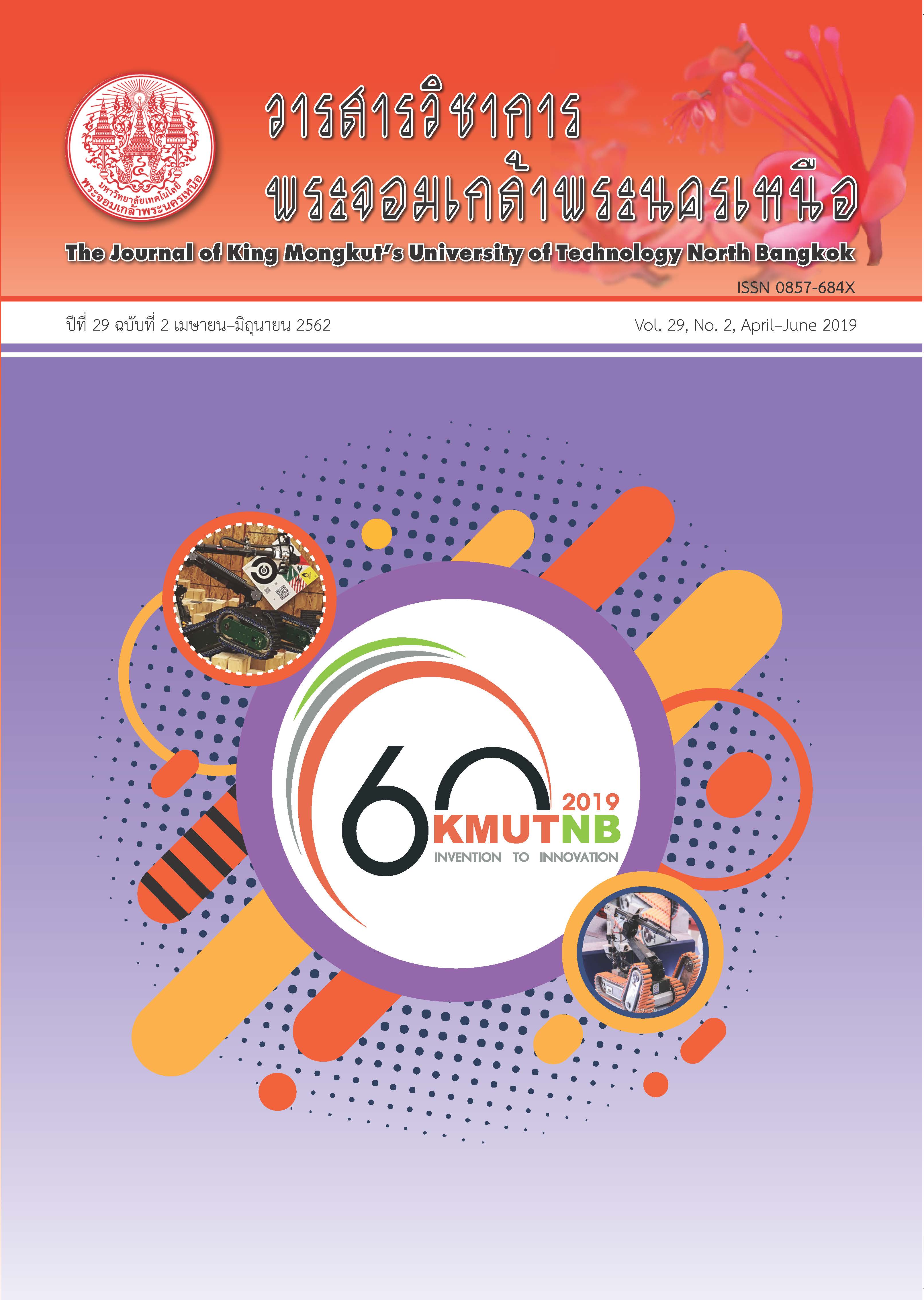การสร้างชั้นภูมิโดยใช้เทคนิคการจัดกลุ่มด้วยอัลกอริทึมเคมีนสำหรับการสุ่มตัวอย่างแบบแบ่งชั้นภูมิ
Main Article Content
บทคัดย่อ
งานวิจัยนี้ได้นำเสนอเทคนิคการสร้างชั้นภูมิด้วยเทคนิคการจัดกลุ่มโดยอัลกอริทึมเคมีนในการประมาณค่าเฉลี่ยประชากรสำหรับการสุ่มตัวอย่างแบบชั้นภูมิ หน่วยตัวอย่างในแต่ละชั้นภูมิสุ่มด้วยวิธีการสุ่มแบบง่ายไม่คืนที่และกระจายตามสัดส่วนกับจำนวนประชากรในชั้นภูมินั้นๆ การศึกษาใช้จำนวนชั้นภูมิเท่ากับ 4, 5 และ 6 ชั้นภูมิ กำหนดค่าสัมประสิทธิ์สหสัมพันธ์สูงสุดระหว่างตัวแปรช่วยกับตัวแปรที่สนใจ เท่ากับ 0.50, 0.70 และ 0.90 และขนาดตัวอย่างเท่ากับ 50, 100, 150, 200 และ 300 หน่วย ประสิทธิภาพของตัวประมาณค่าโดยการสร้างชั้นภูมิตามที่เสนอเปรียบเทียบตัวประมาณค่าโดยการสร้างชั้นภูมิด้วยวิธีของดาเลเนียสและฮอดจ์ ผลการศึกษาพบว่าตัวประมาณค่าเฉลี่ยจากการสุ่มตัวอย่างแบบแบ่งชั้นภูมิที่สร้างชั้นภูมิด้วยอัลกอริทึมเคมีน มีประสิทธิภาพสูงกว่าการสร้างชั้นภูมิโดยวิธีของดาเลเนียสและฮอดจ์ในการจำลองทุกกรณี
Article Details
บทความที่ลงตีพิมพ์เป็นข้อคิดเห็นของผู้เขียนเท่านั้น
ผู้เขียนจะต้องเป็นผู้รับผิดชอบต่อผลทางกฎหมายใดๆ ที่อาจเกิดขึ้นจากบทความนั้น
เอกสารอ้างอิง
[2] K. Silpakob and W. Chaimongkol, “Estimation of population mean with missing data in stratified random sampling,” Burapha Science Journal, vol. 22, no. 2, pp. 202–217, 2017.
[3] M. E. Thompson, Theory of Sample Surveys. London: Chapman & Hall, 1997.
[4] M. H. Hansen, W. N. Hurwitz, and W. G. Madow, Sample Survey Methods and Theory. Canada: John Wiley & Sons, lnc., 1960.
[5] P. Suwatthee, Theory of Sampling Designs. Bangkok: National Institute of Development Administration, 2011.
[6] T. Dalenius and J. L. Hodges, “Minimum variance stratification,” Journal of the American Statistical Association, no. 285, pp. 88, 1959.
[7] Y. Olufadi, “Dual to ratio-cum-product estimator in simple and stratified random sampling,” Pakistan Journal of Statistics and Operation Research, vol. 9, no. 3, pp. 305–319, 2013.
[8] A. K. Gupta, and D. G. Kabe, Theory of Sample Surveys. Singapore: World Scientific Publishing, 2011.
[9] T. Dalenius, “A First Couse in Survey Sampling,” in P. krishnaiash and C. R. Rao (Eds.), Handbook of Statistics Volume 6: Sampling, North-Holland: Elsevier Science B.V., 1988, pp. 15–46.
[10] S. Wichaidit, “DNA microarray data analysis model using clustering algorithm for disease diagnosis,” M.S. thesis, Department of Computer Science, Faculty of Science, Price of Songkla University, 2008.
[11] W. Chongnguluam, “Parallelize rough k-medoids clustering on multicore processor,” M.S. thesis, School of Computer Engineering, Faculty of Engineering, Suranaree University of Technology, 2012.
[12] W. Pimpaporn and P. Meesad, “A comparative efficiency of clustering using dynamic feature selection optimization of subspace clustering algorithms,” Information Technology Journal, vol. 10, no. 2, pp. 43–51, 2014.
[13] J. Kaufman, and P. J. Rousseeuw, Finding Groups in Data: An Introduction to Cluster Analysis. New York: John Wiley, 1990.
[14] G. J. Myatt and W. P. Johnson, Making Sense of Data II: A Practical Guide to Data Visualization, Advanced Data Mining Methods, and Applications. Canada: John Wiley & Sons, Inc. 2009.
[15] W. G. Cochran, Sampling Techniques, 3rd ed. New York : Wiley, c1977., 1977.
[16] X. Liang, S. Li, S. Zhang, H. Huang, and S. X. Chen, “PM2.5 data reliability, consistency, and air quality assessment in five Chinese cities,” Journal of Geophysical Research: Atmospheres, vol. 121, no. 17, 2016.

